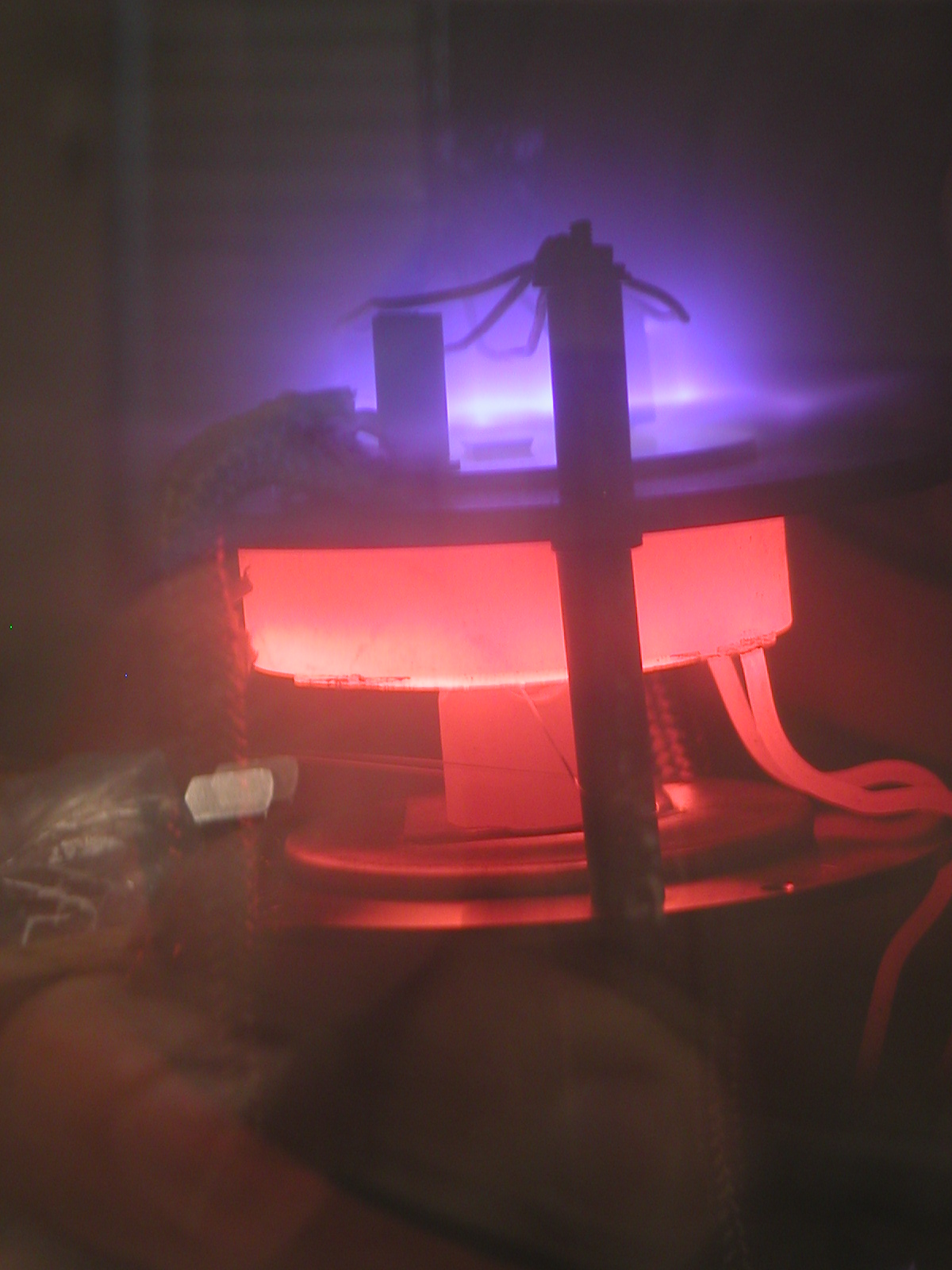One of the most promising ways of replacing petrol and diesel for powering cars is to use fuel cells. These are not a source of energy but the common onces can react a fuel with oxygen and extract the energy directly as electricty.
Unfortunately these are all dependent on platinum to help split the oxygen molecules and so speed up the reaction. Without the platinum the process would be 100 times slower and making a practically sized fuel cell would be virtually impossible.
If you have ever bought any jewelry, platinum is not cheap, and the reason it is so expensive is that it is very rare, and many people think that there simply isn't enough of it to make enough fuel cells from hundreds of millions of cars.
 |
| Nanotubes growing using a plasma enhanced chemical vapour deposition © polyparadigm @ wikipedia |
A team from the University of Dayton in Ohio, may have come up with a solution. They were growing carbon nanotubes doped with a small amount of nitrogen to use as biosensors. But after making the nanotubes they thought they may as well test them to see if they worked as catalysts. As it turns out they produce four times the current of an equivalent area of platinum which is very hopeful, and unlike platinum they don't get tainted by carbon monoxide so they may last longer.
Of course this is very much still on the lab bench, and the carbon nanotubes probably cost more to make than platinum at the moment. But they are made up of cheap elements, carbon and nitrogen, so there is no fundamental reason that they shouldn't get a lot cheaper.










Comments
Add a comment